Education
How much do you really know about the expensive jewellery you purchase? We hope you find the information here on the different aspects of jewellery and tips on how to take care of them insightful and useful.
Of all the minerals mined from the Earth, none is more useful than gold, which symbolizes power, beauty, purity, and accomplishment. Due to its high value and limited supply it has been used as a medium of exchange or money; thereby being looked at as an investment.
Gold’s beautiful and durable properties make it an adornment that is both ethereal and revered; especially in India gold jewellery is a way to attract wealth and blessings.
As gold is so rare and highly valued, this precious metal makes it a natural currency, and has been for at least 6,000 years. The U.S. held all its monetary currency to a gold standard, and since the turn of the millennium, gold value has been on the rise in the stock market. In an uncertain economy, gold has emerged as a possible financial staple. One of the most common ways to hold or invest in gold is in gold coins, gold bars or gold bullion. A gold IRA is an increasingly popular way to invest in gold as well.
Man has been using gold to fashion jewellery for thousands of years, mainly due to its versatility and striking appearance.
Other metals are added to increase its sturdiness and strength which also adds to its color and sheen. The different metals mixed with gold determine its purity, or karat weight, and its diverse tones which can range from black, rose and purple to grey, yellow and white.
-
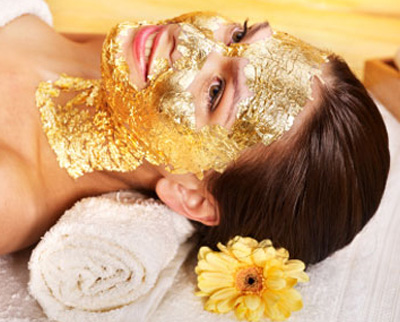 Health benefits of gold
Health benefits of goldGold has been used to enhance mental faculties, to rebuild the nervous system (e.g. in the treatment of multiple sclerosis), to improve digestion, circulation and breathing, and to increase warmth. It can also be used for the treatment of arthritis, skin cancer, blood disorders, pneumonia, vascular diseases, heart disease, eye problems, paralysis, rheumatism, skin disorders, tuberculosis, nightmares, and spinal problems.
Gold assists in the rejuvenation of the endocrine system, in the absorption of vitamins and minerals, and in the regeneration of tissue and the skeletal structure. It balances the right and left brain, and treats conditions associated with autism, dyslexia, epilepsy, and physical coordination.
-
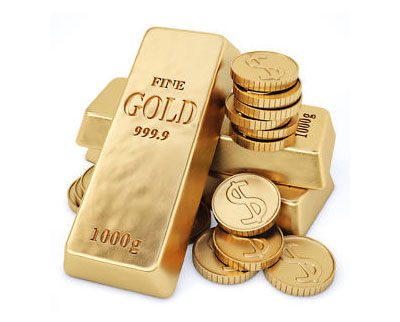 Gold Purity
Gold PurityThe purity of gold is typically expressed in Karats (k or kt), different from Diamond Carats. Real gold ranges in purity from 10 kt, 18 kt, 22 kt to 24 kt being approximately 99% pure gold. Gold purity can also be expressed as "fineness" which measures the purity of gold in 1,000 parts. 990 gold fineness, for example, indicates 99% pure gold.
-
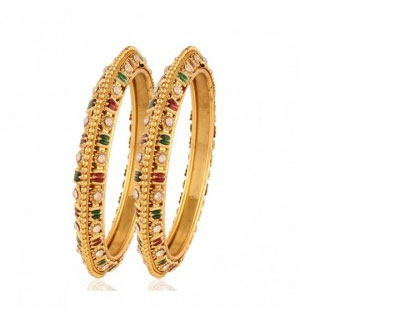 Gold Color
Gold ColorNaturally Gold has a warm Yellowish color depending on the metals added and gold polish done. Gold may take on a variety of different colors. The most popular colors of gold are yellow, white and rose.
-
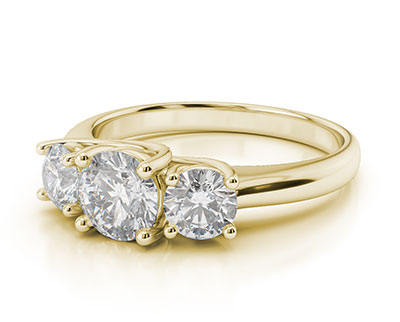 Yellow Gold
Yellow GoldYellow gold is the most common and familiar gold color in the market, 18kt, 22kt and 24kt are the most common purity grades. While 18 karat gold is considered to be more warm and radiant, 22kt is the desirable and popular gold to buy.
-
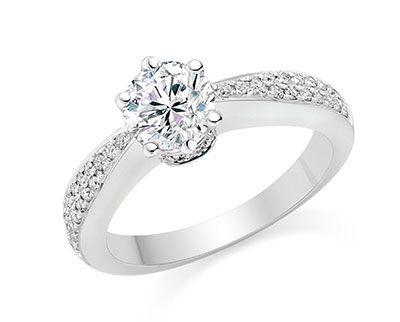 White Gold
White GoldDue to fashion and customized jewelry white gold has become more popular. White gold is an alloy of gold and at least one white metal, usually nickel, manganese or palladium. Like yellow gold, the purity of white gold is given in karats. White gold's properties vary depending on the metals and the proportion used.
-
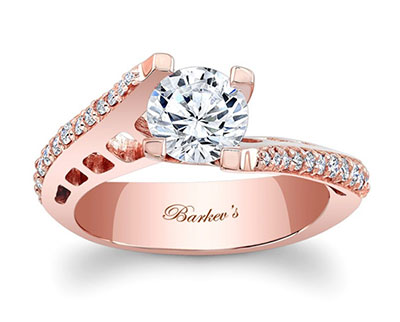 Rose Gold
Rose GoldLatest addition in Gold colors is of Rose Gold. The highest karat version of rose gold is also known as crown gold, which is 22 karat. Another variation of rose gold is red gold. 18 kt red gold may be made of 25% copper and 75% gold. For 18 karat rose gold, typically about 4% silver is added to 75% gold and 21% copper to give a rose color.
-
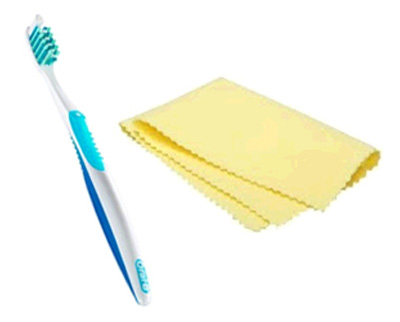 Gold Care
Gold CareAlways store your gold jewellery in their original containers, soft pouches or cloth-lined jewellery boxes. To clean your jewellery, simply soak it in a mild solution of warm soapy water. If necessary, scrub with a soft-bristled brush such as a toothbrush. Then dry your gold jewellery with a clean, soft, dry cloth. Never use paper towel or rough, thread rags. It is important to remove gold jewellery items when participating in any activity that could scratch, chip or damage them.
Silver is a precious metal as it is rare and valuable. It is a noble metal resistant to corrosion and wear and tear. Its high luster and reflectivity make it perfect for jewelry, silverware, and mirrors. Silver has its long history in coinage and jewelry which sustains its status as a symbol of wealth and prestige.
Due to its luster, malleability and affordability, silver is the most common jewellery metal. Like gold and platinum, silver is alloyed with other metals to increase its strength and durability. In its pure form, silver is too soft and easily damaged to be used in jewellery.
It is a more inexpensive and economical choice as a gift when compared to other material like that of gold and platinum. Silver is worn by both men and women the world over in all cultures and religions. The designs and styles available in these ornaments look good on, and are appropriate for all. It blends beautifully with both fair and dark skinned tones and one does not have to worry about contamination as well. Almost all of these items are made as a result of alloying silver with copper .The chances of contamination in sterling are practically none. It is an intelligent investment option. Recent history clearly shows that it has outstripped other metals in several instances. The prices have almost tripled since 2000.
-
 Health benefits of silver
Health benefits of silverThe proverb Health is Wealth is so true. It might sound strange, but wearing pieces of this precious metal helps you in maintaining good health. A recent medical research has revealed some interesting benefits of wearing it.
Silver has been used since time immemorial across time and cultures as a powerful antimicrobial agent that aids in cold and flu prevention, wound healing, and skin care. Silver also helps with internal heat regulation and circulation. Silver also provides protection against harmful electromagnetic radiation from cell phones and other electronics. -
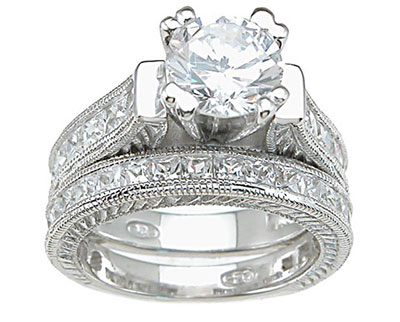 Sterling silver
Sterling silverIs the highest quality and most popular silver alloy, typically composed of 92.5% pure silver and 7.5% copper. Legally, the sterling silver used for ornaments is 92.5% pure. Sometimes the copper is mixed with a small amount of zinc or nickel as well. Frequently, sterling silver is coated with a thin finish of either silver or rhodium to help improve durability.
-
Silver Markings
The standardized quality of silver jewellery is marked on all pieces of silver jewellery. These "fineness" marks are stamped into the metal and indicate the ratio of pure silver to added alloys, and can appear marked as sterling, sterling silver, 925, 92.5 or .925. A maker's mark or trademark must accompany the quality stamp. Always look for both brandings to guarantee the quality of your silver jewellery.
-
 Silver Pricing
Silver PricingSilver is the most common of all precious metals due to its affordability as compared to either gold or platinum. It is also one of the easiest metals to extract which keeps production prices low. The price of silver jewellery is dependent on the fineness, or quality, of the silver and on the amount of labor, intricacy of design, and level of craftsmanship required to fashion the piece.
-
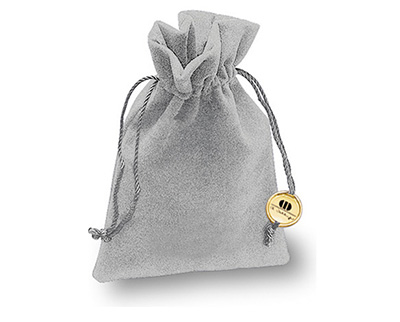 Silver Care
Silver CareRemove your silver jewellery when engaging in any activity that may cause scratching or chipping, such as gardening, painting or outdoor sports. It is also recommended that you remove your silver jewellery when swimming or working with household detergents containing chemicals such as ammonia or bleach as these chemicals can cause permanent damage. Silver jewellery should always be stored in soft, dry, individual pouches to keep it from scratching against other items.
The name diamond is derived from the ancient Greek (adámas), "proper", "unalterable", "and unbreakable.”
The beautiful diamond has a history that is rich in romance, hope, violence, and intrigue. Every diamond has a story to tell.
The grandeur and sparkle of this magnificent gem has hypnotized mankind since times immemorial.
Diamonds rank among the oldest substances in our planet, and ironically a diamond is made of one of the most common elements - carbon. Their creation began nearly 3.3 billion years ago, 200 kilometers below the surface of the earth.
Carbon containing materials took on a crystalline form due to the high pressures underground, and these were pushed to the surface of the earth by volcanic eruptions. The first diamonds were mined in India along river banks as far as back as 3000-6000 years!
Diamonds were revered by Indians.
-
 Health benefits of Diamond
Health benefits of DiamondDiamond is a precious stone of miraculous abilities and exceptional power.
When a diamond is properly faceted, it sparkles with multi-colored rays of light. Diamonds have many healing powers as they strengthen and re-energize all the energy centers of the wearer. According to Eastern culture, diamonds are used to prepare heart tonics. Popular legacy is that people who carry diamonds wouldn't suffer from chronic stomach problems or any memory loss. Hindus in the ancient times strongly believed that the vibrations of a diamond render a very positive aura to many organs of the body, brain and heart in particular.
Other healing powers of diamonds also include protecting the owner from driving away bad dreams, fight depressions and preventing apoplexy. Green diamonds are particularly useful to mothers during their time of delivery; this type of diamond is also considered to be a symbol of motherhood.
It was also believed that wearing a diamond made a person courageous and invincible. Kings often wore diamonds to battle, and it worked because nobody dared to attack a person protected by the power of the diamond! -
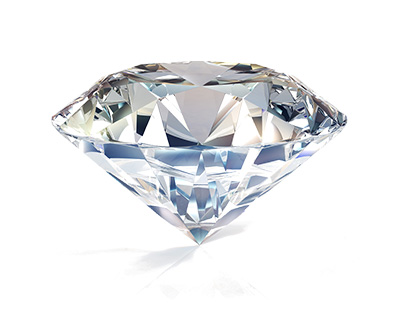 The 4 Cs of Diamond
The 4 Cs of DiamondThe 4 Cs (Cut, Clarity, Color, and Carat Weight) are the main factors by which the diamond industry evaluates a diamond's physical attributes. It's very important to understand this basic terminology, as it is the mode by which diamond dealers’ rate diamonds comparatively, and the way in which diamonds are evaluated by laboratories which issue Diamond Grading Reports. Understanding the 4 Cs will enable you to grasp the details that are listed in your diamond's grading report, and give you the 4 most important words in the vocabulary of the diamond industry.
-
 Cut
CutCut refers to the proportions, symmetry, finish, and polish of a diamond. These are factors that influence the brilliance and reflective qualities of the diamond. A high quality diamond cut will result in a symmetrical, brilliant stone that reflects maximum fire and brilliance. A poor cut will muffle the brilliance or sparkle of a diamond by preventing light from being dispersed evenly.
A well cut diamond sparkles brighter and the more cuts the diamond has, the more beautiful it looks. It takes time and skill to produce a well cut diamond. If your diamond has a high cut grade, it will be valued more highly.
The most popular solitaire styles vary by diamond shape. Listed below are some of the most popular solitaire shapes in order of popularity. -
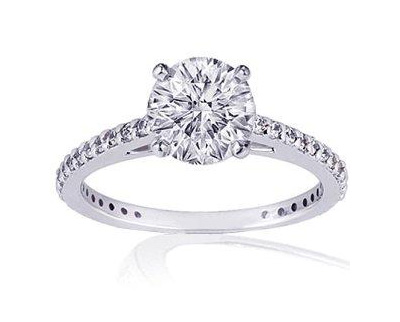 Round solitaire – round brilliant cut
Round solitaire – round brilliant cutThe round diamond is generally superior to fancy diamond shapes due to the proper reflection of light, maximizing potential brightness.
-
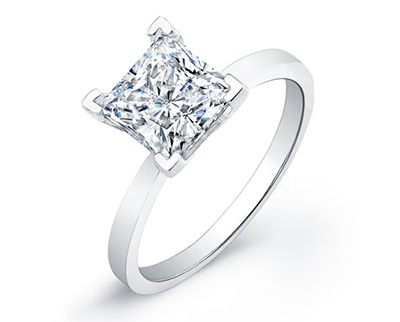 Princess solitaire – square princess cut diamond
Princess solitaire – square princess cut diamondThe face-up shape of the princess cut is square or rectangular and the profile or side-on shape is similar to that of an inverted pyramid with four beveled sides.
-
 Emerald cut solitaire – rectangular step cut diamond
Emerald cut solitaire – rectangular step cut diamondThe unique look of the emerald cut diamond is created by the step cuts of its pavilion and its large, open table. Instead of the sparkle of a brilliant cut, emerald cut diamonds produce a hall-of-mirrors effect, with the interplay of light and dark planes .
-
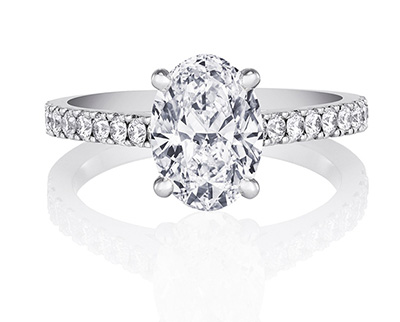 Oval solitaire – similar to the round brilliant but elongated
Oval solitaire – similar to the round brilliant but elongatedOval cut diamonds are classic yet modern! They are popular in all types of jewellery as they have an incredible brilliance similar to the round cut. They also are a good bet to accentuate long slender fingers.
-
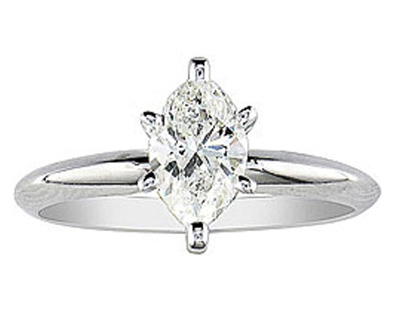 Marquise solitaire – boat shaped with pointed ends
Marquise solitaire – boat shaped with pointed endsThe football-shaped marquise diamonds are a modified brilliant cut. Marquise diamonds are long and narrow, and create the illusion of greater size. Carat for carat, the marquise diamond has one of the largest crown surface areas of any diamond shape, making it a good choice when trying to maximize the perceived size of a diamond.
-
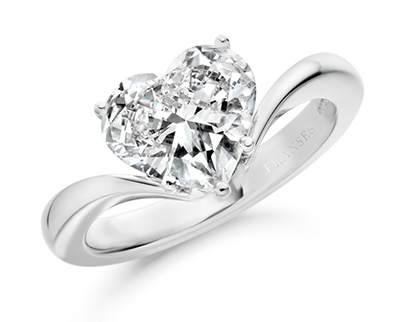 Heart solitaire – most romantic heart shaped brilliant cut
Heart solitaire – most romantic heart shaped brilliant cutWhen choosing modified brilliant cut heart shaped diamond, the symmetry is a very important characteristic, since it is critical that the two halves of the heart are identical. The cleft (between the two lobes) should be sharp and distinct, and the wings (the sides as they curve down to the point) should have a very slightly rounded shape.
-
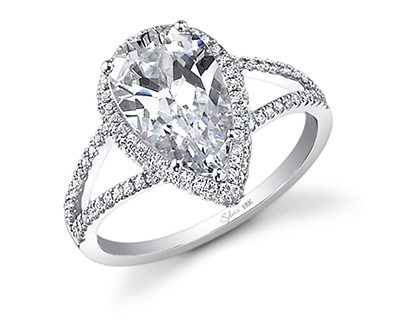 Pear Shaped – combination of round and marquise
Pear Shaped – combination of round and marquiseThe modified brilliant-cut pear shaped diamond is a combination of a round and a marquise shape, with a tapered point on one end.
-
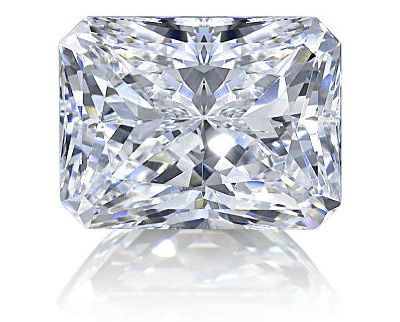 Radiant cut diamond
Radiant cut diamondThe radiant cut diamond has a definite rectangular outline with cut corners.
-
 Color
ColorThe color of your diamond will determine its quality. When buying a diamond, remember that a small difference in the color grade can make a huge difference in the price of the diamond.
Color refers to the color scale of white diamonds, or the color or colors of fancy diamonds. White diamonds can be completely colorless, or have a yellowish tone, but even the most yellow of white diamonds is far less colorful than a fancy yellow diamond. Fancy diamond colors include red, blue, pink, green, orange, yellow, black and brown, and one diamond may include more than one color. Fancy diamonds, being rarer than white diamonds, may be more valuable, depending on their level of purity and size. The pink diamond is the rarest and most sought after diamond. The Gemological Institute of America (GIA) classifies low saturation yellow and brown diamonds as diamonds in the normal color range, and applies a grading scale from "D" (colorless) to "Z" (light yellow). Diamonds of a different color, such as blue, are called fancy colored diamonds, and fall under a different grading scale. -
 Clarity
ClarityFlawless diamonds are rare and very expensive. Most diamonds have imperfections. However, the fewer and less visible the imperfections, the more valued is the diamond. Virtually all diamonds contain "birthmarks"; which are small imperfections inside the diamond (called inclusions), or on its surface (called blemishes) since they are formed deep within the earth.
Clarity in diamonds refers to their clearness and purity, that is how many impurities or blemishes occur both on the inside and on the surface of a diamond, and where they are positioned. A perfectly clear diamond is the most desirable, and will have the highest clarity rating. Every imperfection or color flaw inside or outside the diamond will diminish its level of clarity, and therefore its value. Even fancy colored diamonds have clarity ratings, and have a heightened value based on how perfect and even they are, and how many or few blemishes they include. -
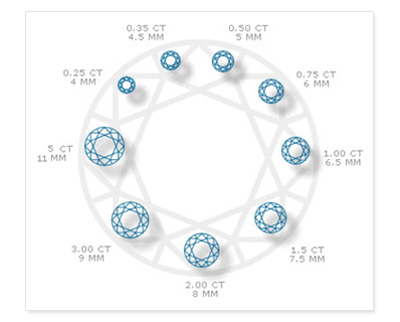 Carat Weight
Carat WeightCarat refers to the weight of a diamond. The term itself is derived from the Carob fruit, whose evenly weighted seeds were used long ago as a comparative measurement for the weighing of diamonds and other small, but valuable, items. Contrary to popular belief, carat weight is not directly correlated to the size of a diamond. One carat is equal to 0.20 grams, and is subdivided into 100 points. Larger diamonds are rarer than small diamonds, which means that each subsequent carat of weight makes a diamond successively more expensive with the value per carat increasing with the size of the diamond. An obvious example for this is that two 0.50 carat diamonds are worth less than a single 1 carat diamond due to the natural rarity of larger rough diamonds.
-
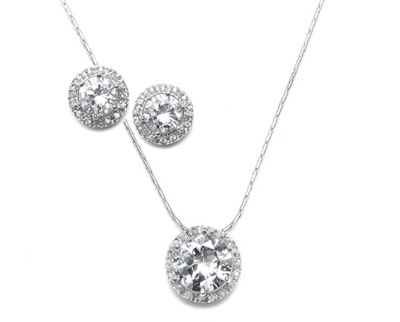 How to Care for your Diamonds
How to Care for your DiamondsRemove all diamond jewelry before performing any heavy-duty tasks. : Tasks that should be done without wearing jewelry include: Gardening, working in the kitchen, cleaning the house, doing outdoor jobs and heavy lifting work. Lotions, perfumes, hairspray and cosmetics contain chemicals that can damage diamond jewelry. Only put the diamond items on after you are done with using these products. Remove your diamond jewelry before you take a shower. Soap can form a layer of film on diamonds, which can quickly dull their radiance and appearance.
-
Certification - The 5th C of Diamonds
GIA, AGS, EGL and other diamond grading certificates, or certs, as they are known in the diamond industry, are often called the fifth C, in addition to the well-known 4Cs of diamond stones: Carat Weight, Cut, Color, and Clarity. Ensuring your diamond is certified by one of the leading independent and recognised certificationlaboratories is essential for an unbiased assessment of the stone's quality.
GIA, AGS, HRD, IGI & EGL are the leading grading bodies in the diamond industry, and are listed here in order of their stringent grading policy.
The price you will end up paying for a diamond is highly dependent on how the diamond is graded in the grading report and/or "certificate”. The Gemological Institute of America's (GIA), HRD Lab's, American Gem Society's (AGS), and Gem Certification and Assurance Lab's (GCAL) reports command the highest premium in the industry. However, among all the other gems labs, there is significant discrepancy in how they grade diamonds and the reliability of their grading reports.
-
 GIA
GIAThe Gemological Institute of America is a non-profit organization dedicated to the research and education of gems and jewelry. At present, GIA’s diamond grading reports are top rated diamond verification and “certification” documents in the diamond industry.
-
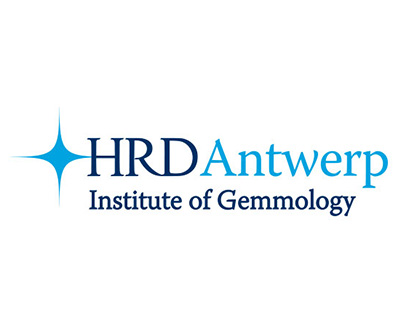 HRD
HRDHRD Antwerp’s is mainly owned by Antwerp world diamond centre. AWDC was founded in 1973 and represents the Belgian diamond industry. HRD Labs are very reliable.
-
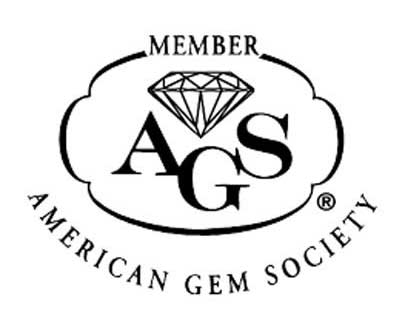 AGS
AGSThe American Gem Society, is a membership organization of jewellers, suppliers, appraisers, and traders. The company has been around since1934.They also have an advanced instruments division founded in 2004. AGSL is the division that grades diamonds and have developed their own standards for grading diamonds. AGSL is a close competitor to GIA and has a strong reputation in the diamond industry.
-
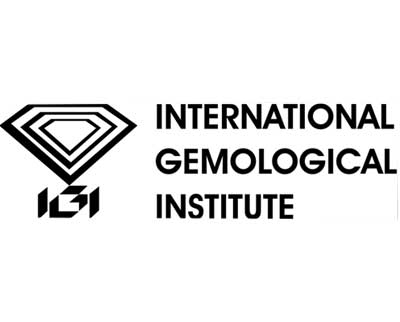 IGI
IGIThe International Gemological Institute was established in 1975 and is headquartered in Antwerp – one of the key centers of the diamond business. IGI has several branches all around the world and is one of the largest labs in the world. It also has a gemology school. IGI is graded as slightly less strict than GIA or AGS.
-
 GSI
GSIGemological Science International mainly grades diamonds for some of the large chain stores in mass numbers. Recently, they have expanded their operations to a number of countries worldwide. GSI seems to be a favorite of large stores as they grade diamonds much faster than GIA or AGS. GSI is close to IGI in how they grade diamonds and usually grades diamonds one grade lower than GIA or AGS.
In order to make an informed decision on the various diamond grading reports/certifications, it is important to understand exactly how diamonds are graded to begin with. The major gem labs have remarkably similar processes for analyzing and grading diamonds. The process usually involves several graduate gemologists independently assessing the cut, color, clarity and carat weight of the diamond, with the final grade being extracted after an evaluation of all the assessments. This process helps to reduce the potential for human error in the determination of a diamond’s final grade, but it still doesn’t eliminate it. -
Consistency of result
Part of the reason for AGS and GIA’s dominance is their consistency in that they are able to consistently assign similar diamonds the same grade.
-
Certificate Standards
Another major consideration in diamond certification is the certification standards that the various labs operate by. In order to illustrate this point, one could consider GIA and IGI side by side: GIA is a non-profit organization while IGI is a commercial institution. Expectably, GIA has been known to be somewhat more objective than IGI for the simple reason that the latter is bound by their profit motive to be more customer oriented (the customers in this case being diamond merchants). The disparity in results is an open secret in the industry. Sometimes commercial labs would give diamonds an average of one point higher grading than those given by GIA and AGS to make their clients happy.
In a nutshell, from a buyer’s perspective, diamond certification is very important while buying a diamond. The diamond grading or certification come from a wide variety of labs, all with varying reliability, but in order to get the best possible deal, your best bet would be to go for a diamond that has either GIA or AGS certification..
If you’re a little confused about exactly what platinum is, it would be good to think of platinum as a cross between gold and silver, an element that looks a lot like silver but has prices set in the range of gold. A rare treasure, Platinum is one of the rarest precious metals on earth. A shiny, silvery-white metal, it is as resistant to corrosion as gold. Even gold is more abundant than platinum. To own just one piece of platinum jewelery is to possess an extraordinary treasure. Platinum is used extensively for jewellery.
Platinum is more ductile than gold, silver or copper, thus being the most ductile of pure metals. It is a naturally white precious metal and has several properties that make it a preferred jewellery material. Platinum jewellery offers an incredibly gorgeous white shine and silky polish that is not found in other white metals. When you compare platinum, white gold and sterling silver in person, you can easily tell the difference. Among the main advantages of using platinum for jewellery are its strength and resistance to tarnish, both of which make it the ideal setting for diamonds and other gemstones.
-
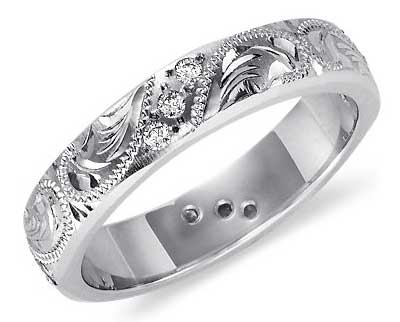 It’s a very rare metal and hence its price hovers just above gold.
It’s a very rare metal and hence its price hovers just above gold.Platinum does make certain demands on the jeweller's skills. Careful attention to polishing technique is needed to achieve the highly reflective finish which shows a diamond or other precious stone at its best.
Platinum doesn't lose its shine and color like some other white metals can, which makes it a fantastic investment. -
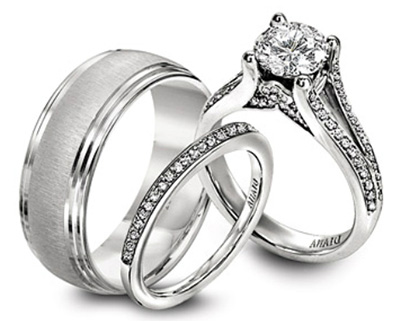 No need to maintain
No need to maintainPlatinum jewelry is very low-maintenance. Sterling silver can tarnish and require heavy-duty cleaning, but platinum will remain the same for decades. A quick steam cleaning at your professional jeweler will get your platinum rings clean and keep them looking lovely.
Many people suffer from metal allergies and can get skin rashes from gold, silver, nickel and other jewelry metals. Platinum is hypoallergenic, which makes it the best choice for anyone with sensitive skin. Hypoallergenic metal is especially important on your fingers. -
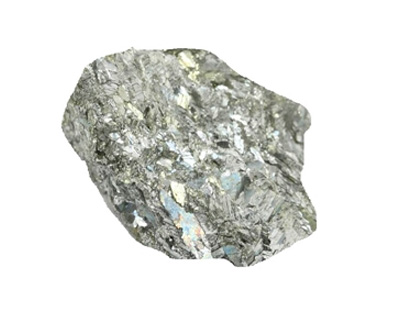 Health Benefits of Platinum
Health Benefits of PlatinumPlatinum is used to make ornaments, Dental fillings and even coins. This metal has medical uses also and is used in homeopathy to treat specific health complaints, especially those relating to women. In fact, this precious metal is extremely beneficial for women suffering from specific medical problems. While most people are still ignorant regarding the health benefits offered by platinum or its value in treating numerous health conditions, this metal is being accepted to a greater extent within the homeopathic community owing to its medicinal properties and its use in treating specific health problems.
Precious and semiprecious stones, in addition to gold, silver, and platinum, are the most commonly used components of jewellery.
Gem Stones are the most precious gift of God to mankind. In ancient times people worshipped gemstones such as in Peru a large ostrich egg shaped emerald as their God.
Egyptians stored their gemstones in their tombs to protect them from natural disasters and calamities.
Certain gemstones have magical powers of healing and fortune giving. Through the sands of time, gemstones have been considered to ward off the evil eye. These precious stones have magnetic power and emit particular frequency vibrations that can change your energy levels when you wear them in close contact with the skin.
In Precious stones Diamonds have traditionally been the most highly prized of such stones. Rubies, Emeralds, and Sapphires are other precious stones used for jewelry, as are the less costly Chrysoberyl, Topaz, and Zircon.
Their fiery brilliance and intense color has resulted in the popularity of gemstone jewellery.
Few Semiprecious stones are Amethyst, Garnet, Opal, Aquamarine, Jade , Turquoise, Agate, Onyx, Lapis Lazuli, and Malachite.
Gemstones are of various minerals and highly prized for beauty, durability, and rarity.
Technical Know how on Gemstone Evaluation
Gemstone evaluation follows the same system as diamond grading. The 4Cs - color, clarity, cut and carat - are the parameters used to judge the value of a gemstone. The difference is that while the cut is the most important factor in assessing a diamond, the color of the gemstone is paramount.
Evaluating a Gemstone's Color
A gemstone's color is evaluated using three parameters. These are hue, tint and saturation.
-
 Ruby
RubyRuby is a stone of power and in the fascinating world of gemstones, it is the undisputed ruler.
Ruby is the red manifestation of corundum; all other colors of corundum are referred to as sapphire. Due to its durability, brilliance and bewitching red color, it has for thousands of years been considered to be one of the most valuable gemstones. Larger rubies, being rarer, command the highest prices. This precious gemstone has a very good hardness of 9 on the Mohs scale. Owing to its red color, the ruby is commonly associated with passion, love, power, warmth, blood, and fire. Rubies have been worn by warriors to give them courage, by kings to give them power, and have been gifted as an expression of undying love. The highest quality rubies exhibit a deep vivid red or purplish red.
Sun is said to be the king of planets and the soul of the Zodiac, and rules the sign of Leo. The gem of Sun is Natural Ruby and the metal is Gold. The day associated with Sun is Sunday. The ruby is also called as Padamarag and Manikya.
-
 Sapphire
SapphireSapphire is a member of the corundum family. Sapphires most commonly occur in blue, and vivid, pure, deep blues are the most valuable. For thousands of years, sapphire has been associated solely with the color blue, its name originating from the Greek word 'sappheiros', meaning blue. However, sapphires can be found in every color besides red, as red sapphires are called rubies. Throughout the course of history, this gem has been worn as a protective amulet, as a symbol of harmony, loyalty and friendship, and as a romantic token. The stone has a very good hardness of 9 on the Mohs scale. Sri Lanka is the biggest producer of sapphires, but they are also mined in Kenya, Burma, Tanzania, Kashmir, Madagascar, Thailand, Vietnam, Cambodia, Laos, Australia, and the United States. The sapphire is the September birthstone in the United States.
This stone's main area of influence is the glands in the body such as the pituitary gland and other endocrine glands. Therefore, it is believed to improve the secretion of hormones, ensure normal body function and keep diseases at bay. By acting on the chemicals in the body, sapphire also improves the emotional wellbeing; no wonder then that people with depression are asked to wear sapphire.
-
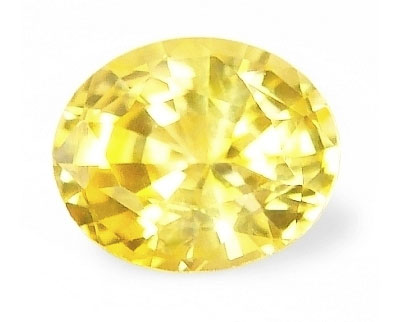 Yellow Sapphire
Yellow SapphireYellow sapphire stone is an attractive stone of light yellow colour stone which is genuinely mesmerizing due to its unique color characteristic and cuts. This gemstone is contemplated being the most auspicious stone among all available gemstones.
Being associated with the powerful planet Jupiter, the yellow sapphire stone provides infinite number of benefits to its wearer.
It enhances ones intelligence, wisdom, communication skills and helps them to achieve great heights in their careers.
It brings success, economic abundance, luxuries in life, longevity and good health.
According to Ayurveda the elegant looking yellow sapphire stone, has numerous health benefits. It aids in healing problems related to bones, especially proves efficient to curb joint pain. Aside from this, this stone also works as an effective antidote for cough, piles and lung diseases. -
 Diamond
DiamondThe name diamond is derived from the ancient Greek (adámas), "proper", "unalterable", "and unbreakable.” The beautiful diamond has a history that is rich in romance, hope, violence, and intrigue. Every diamond has a story to tell
The grandeur and sparkle of this magnificent gem has hypnotized mankind since times immemorial.
Diamonds rank among the oldest substances in our planet, and ironically a diamond is made of one of the most common elements - carbon. Their creation began nearly 3.3 billion years ago, 200 kilometers below the surface of the earth.
Click Here to know more -
 Emerald
EmeraldIt is one of the most attractive gemstones and counts among the Big Three in the world of coloured gemstones - rubies, sapphires and emeralds.
It comes in beautiful colours ranging from a rich deep luxurious green to a vibrant and lively early summer grass green. When choosing an emerald you must ensure that you get the most perfect colour with just the right mix of hue, tone and saturation.
It is used extensively in planetary gem therapy to harness the energies of Mercury.
The emerald is a member of the beryl family. It is very rare and commands relatively high prices in the market. Since inclusion-free emeralds are extremely infrequent, the detection of inclusions minimally impacts the value of an emerald, if at all; only very severe and deep inclusions will reduce an emerald's value. The most highly-priced emeralds exhibit a bright grass-like green. Emeralds have a very good hardness of 7.5-8 on the Mohs scale. They are known worldwide for their exquisite green hue and have been embraced by mankind for over 4,000 years. They are believed by many cultures to have positive supernatural powers. Their green colour can range from a very light yellowish green to a deep, dark, sometimes bluish tint. Currently, most emeralds are mined in Columbia, Brazil, Zambia, Zimbabwe, Afghanistan and Madagascar.
Benefits of wearing an emerald gemstone are numerous.- Wearing an emerald, also known as panna or zammrud brings in intellectual progress. Natural intelligence and intellect is the domain of Planet Mercury and enhancing this planets power brings in better understanding of life, a balanced perspective and better ability to grasp deeper subjects too.
- An individual who wears an emerald for a well placed Mercury, can beget great fame and fortune. As the name suggests, there can be a mercurial rise in life.
- This sparkling green stone is said to be beneficial in dealing with musculo-skeletal disorders. It helps in overcoming muscle pain and spasm as also disorders related to the spine. It helps to develop a positive mindset and this in turns improves the physical health, too. Overall, it has a harmonizing effect on daily life.
-
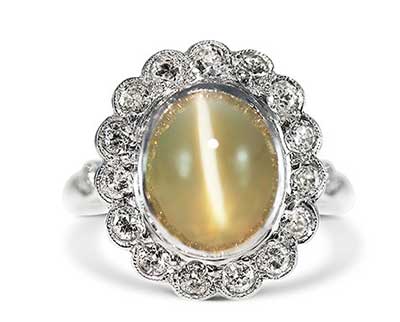 Cats eye Chrysoberyl
Cats eye ChrysoberylThe cat’s eye gemstone is quite an intriguing gem. Apart from its appearance which is distinct, its metaphysical powers and properties have always fascinated human beings. According to Vedic astrology, Cat’s eye Chrysoberyl also known as lehsunia or vaidurya is the gemstone of Planet Ketu or South Node of the Moon. It is a gemstone with intense planetary energies and shows effects quite fast.
Benefits of wearing a Cat’s eye Chrysoberyl are numerous.
The wearer of cat’s eye gemstone can regain his lost wealth. It also has the capacity to restart a closed business. Cat’s eye Chrysoberyl is a favoured gem with individuals who love to gamble or regularly participate in speculative activities and games of chance as it is said to bring luck. This is a gem for risk takers and adventurers.
It can give psychic protection and ward off the effects of evil eye.
Ketu is a planet that helps an individual evolve through varied and more often than not experiences. Wearing a cat’s eye can ease the pain that invariably accompanies life’s tough lessons. It helps in detaching from unhealthy materialistic or worldly attachments
The energies of mystical planet Ketu help an individual’s spiritual advancement, especially as a religious seeker or evangelist.
The cat’s eye gem is believed to build back the physical body that has been damaged by abuse (of any kind – unhealthy habits, disease, depression etc.). It is a gemstone that is believed to help in healing from cancer Wearing a cat’s eye gem can provide release from a lot of unnamed fears and complexes that keep a person crippled and hesitant from taking positive steps for oneself. -
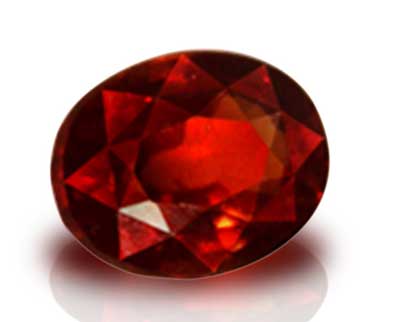 Hessonite (Gomed)
Hessonite (Gomed)It has a characteristic red color, inclining to orange or yellow, much like that of zircon.
Hessonite comes chiefly from Sri Lanka and India The Hessonite Garnet Stone is also called as “Gomed” stone in Hindi. As per regional differences it is also called as Gomedh or “Gomedak” in Sanskrit. In certain parts of India it is also referred to as “Gomedhikam”. A Jyotish Quality Gomed Gemstone is filled with the energies of the malefic and the strong planet-Rahu.
The value of any garnet depends entirely on color, size and rarity. While deep red is the most common, affordable and traditional garnet color, garnets may range from green, orange, and yellow to earthier sepia hues; they come in almost every color, other than blue. Garnets have a good hardness of 7.5-8 on the Mohs scale. These gemstones have been valued by mankind for thousands of years and are mentioned most famously in the story of Noah's Ark.
If you want to improve your intake of vitamins and minerals, eat a lot of veggies and also wear a garnet stone. This stone is thought to help the body absorb minerals such as calcium, iodine and magnesium and the vitamins A and E from food sources. At the emotional level, it may help you feel more committed to your values and inspire you to serve a social cause. -
 Coral
CoralCoral is an organic gemstone. Genuine, untreated coral is very rare and therefore very valuable. It is extremely delicate, its hardness measuring at approximately 3.5-4 on the Mohs scale. Coral is composed of calcium carbonate, which is secreted by small sea polyps in order to create their own natural protective habitat. Commercial coral is never harvested from protected reefs or banks, and harvesters have recently become more careful with their harvesting methods, dispatching professional divers to carefully collect coral branches so as to avoid damaging the sea organisms within. Most coral used in jewellery comes from Sicily or Sardinia. Coral ranges in color from reds and oranges to whites and even blues.
Coral Reduces Cholesterol
Widely used in jewellery, coral stones are helpful in maintaining blood cholesterol levels within normal limits. If you want to reduce your chance of having heart disease and hypertension, try wearing a coral pendant or ring. Coral also helps in absorbing the nutrient called niacin which is important for the functioning of several metabolic enzymes in the body. At the mental level, it has a calming effect and bestows the ability to adapt easily to change. -
 Pearl
PearlPearl is a very famous gemstone which is found in ocean beds. It is worn both as jewelry and as a stone for astrological benefits. The original pearl stone is a flawless, smooth, shining, round stone and a zodiac gemstone for cancerians.
The most valuable of all organic gemstones, pearls are created when an oyster senses an irritant within its soft shell and then coats it with layers of nacre. Nowadays almost all pearls in the market are cultured by artificially introducing a small bead or shell into the mouth of an oyster. The majority of pearls are cultured in Japan, but many are harvested in China and the South Pacific. Pearls range in size, shape and color: some are large, round and white while others are small, amorphous, and black. Pearls have always been considered classic gemstones, symbolic of beauty and dignity.
The ideal pearl is perfectly round and smooth, but many other shapes occur. The finest quality natural pearls have been highly valued as gemstones and objects of beauty since time immemorial. Pearl has become another name for something rare, fine, admirable and valuable.
The most valuable pearls occur spontaneously in the wild, but are extremely rare. These wild pearls are referred to as natural pearls. Cultured or farmed pearls from pearl oysters and freshwater mussels make up the majority of those currently sold. Imitation pearls are also widely sold in inexpensive jewelry, but the quality of their shine is usually very poor and is easily distinguished from that of genuine pearls. Pearls have been harvested and cultivated primarily for use in jewellery but in the past were also used to adorn clothing. They have also been crushed and used in cosmetics and medicine
Black pearls are very rarely black: they are usually shades of green, purple, aubergine, blue, grey, silver or peacock (a mix of several shades, like a peacock's feather).
South Sea pearls are the largest and rarest of the cultured pearls – making them the most valuable. Prized for their exquisitely beautiful look and lustre, South Sea pearls are now farmed in various parts of the world where the Pinctada maxima oysters can be found, along the remote coastline of North-Western Australia.
If you hear a diabetic person say that he has managed to get his blood sugar levels in control, check if he is wearing a ring inset with a pearl. Believed to improve the functioning of the pancreas, this stone has the influence of increasing insulin secretion in the body and helps its appropriate utilization. It also helps to remove fluctuations of the mind that lead to emotional imbalance.
